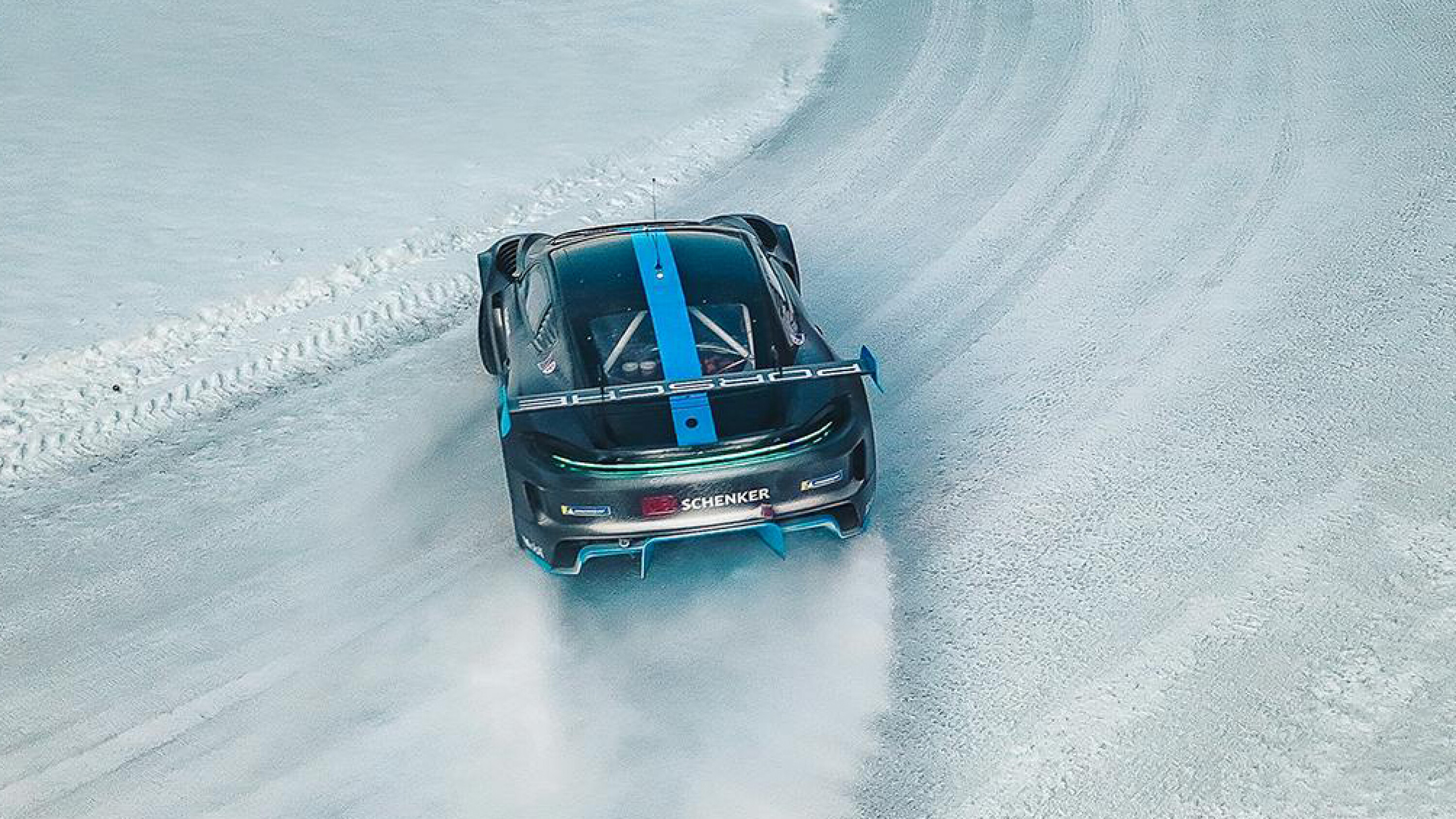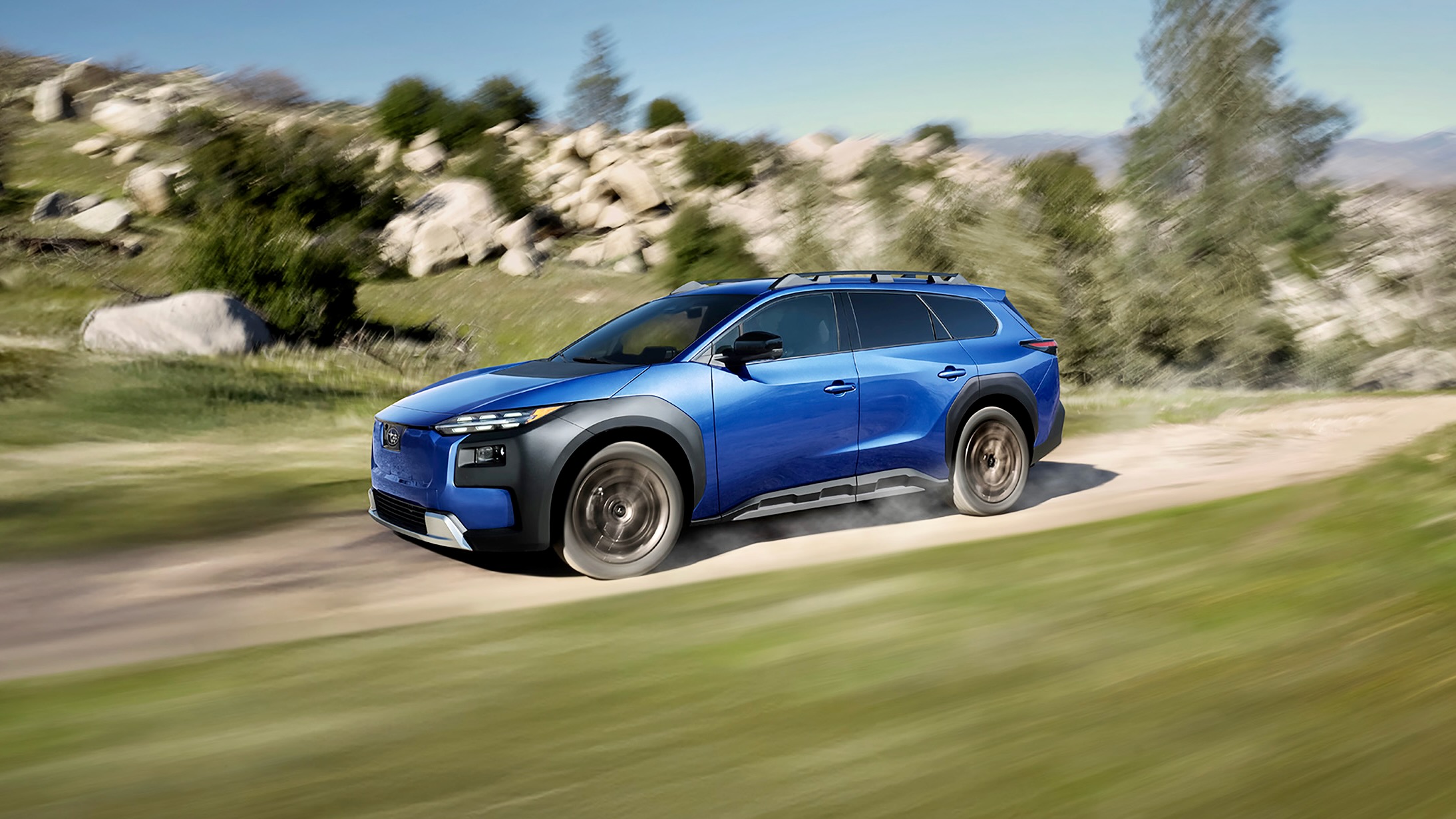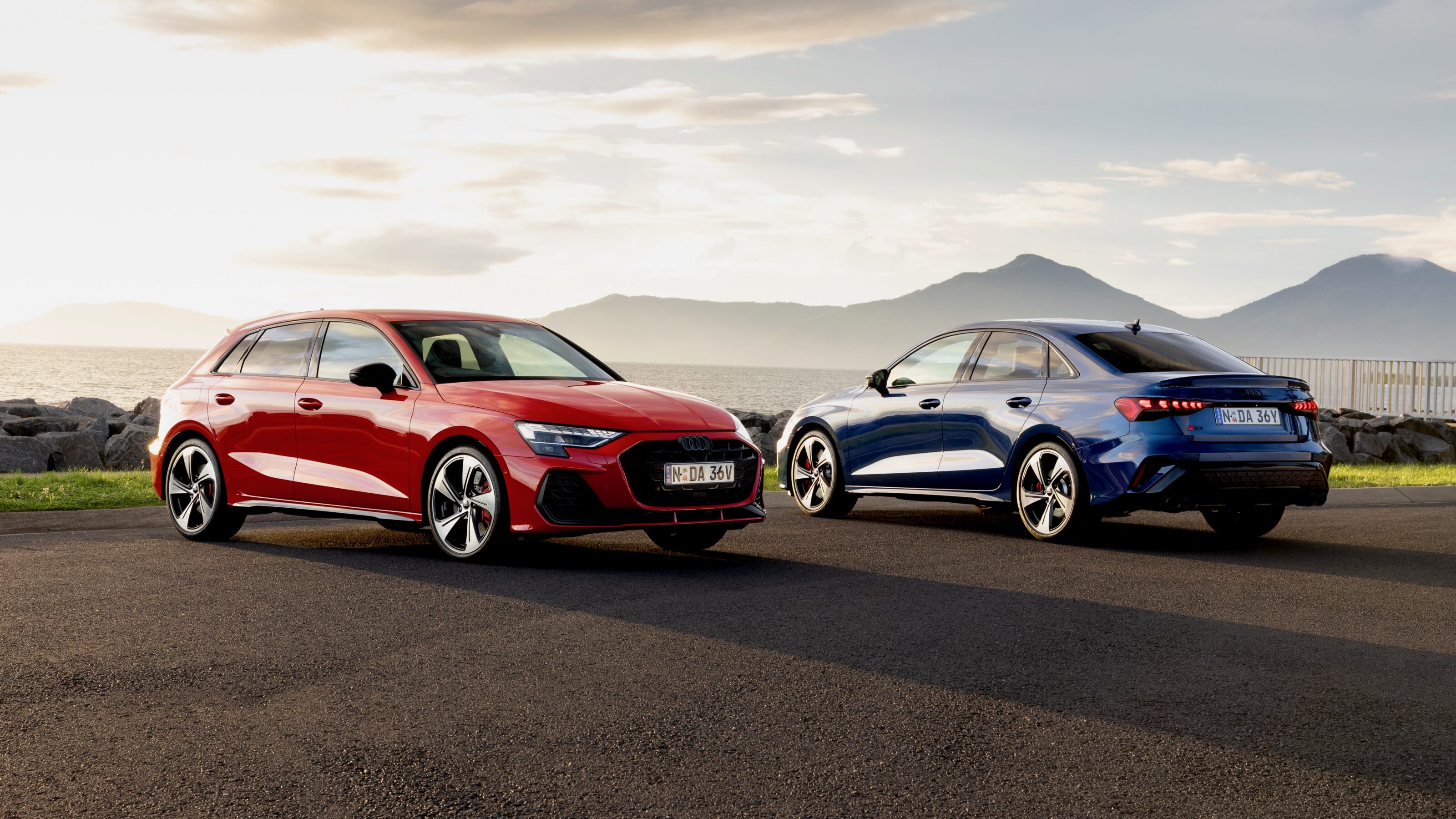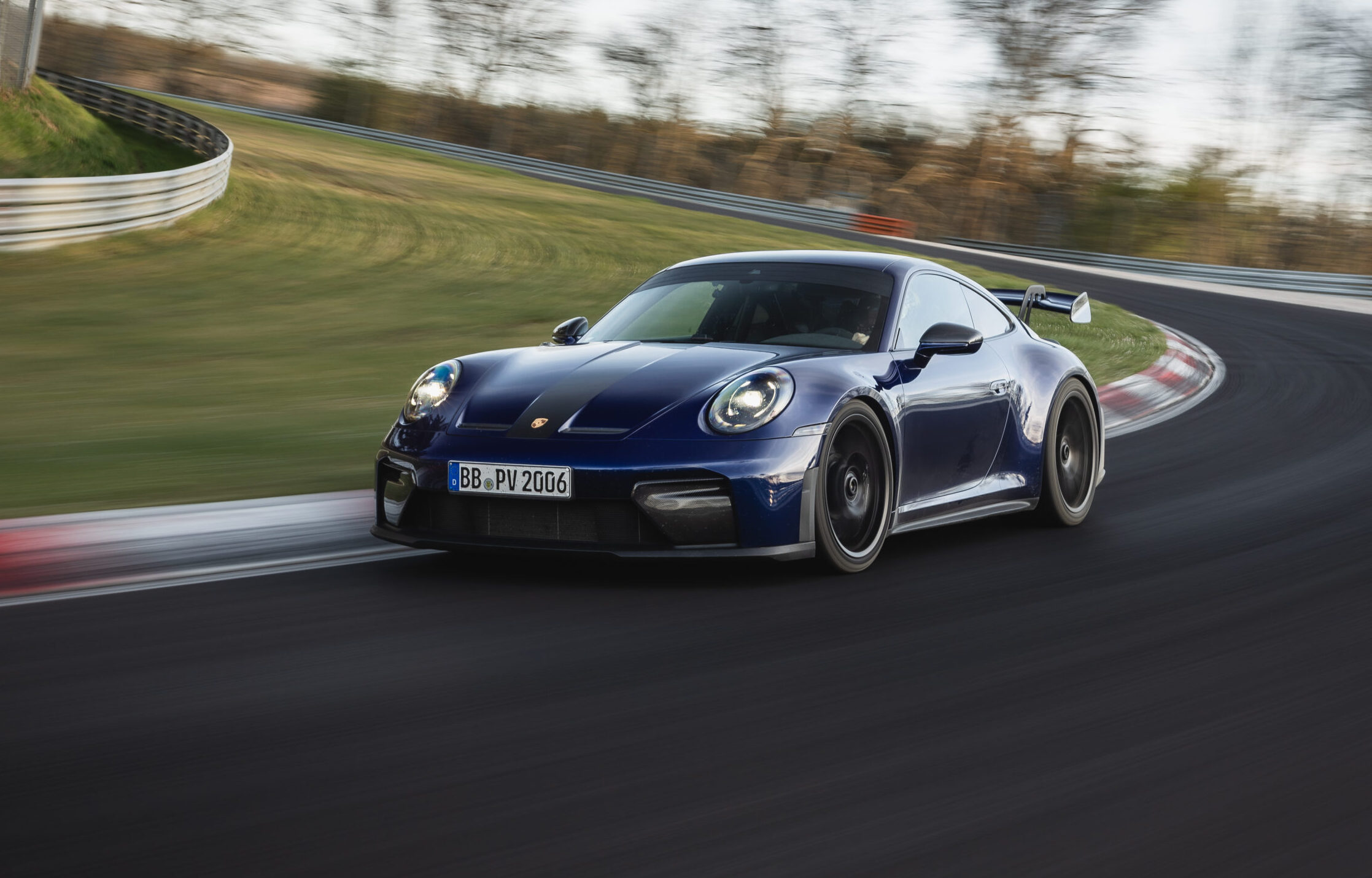We’ve seen it for a few decades now – faster cars have all-wheel drive (AWD) to help get the grunt down to the ground – and that’s also a common theme across ICE Porsche models.
However, it seems evident that Porsche electric sports cars of the future will also sport AWD as a crucial component to the drive experience – and it’s not simply to boast a faster 0-100 time.
Björn Förster, the project manager behind the Porsche GT4 e-Performance prototype racing EV, said AWD is going to be vital in fast EVs to help them go, but also to help them stop.
Mr Förster explained that, currently, battery weight is still a big consideration for EV development, and that by having dual motors rather than a single motor setup, you can reduce the battery capacity needed, lowering the weight of the car, and – in the case of the brand’s prototype model – improving its braking performance, too.
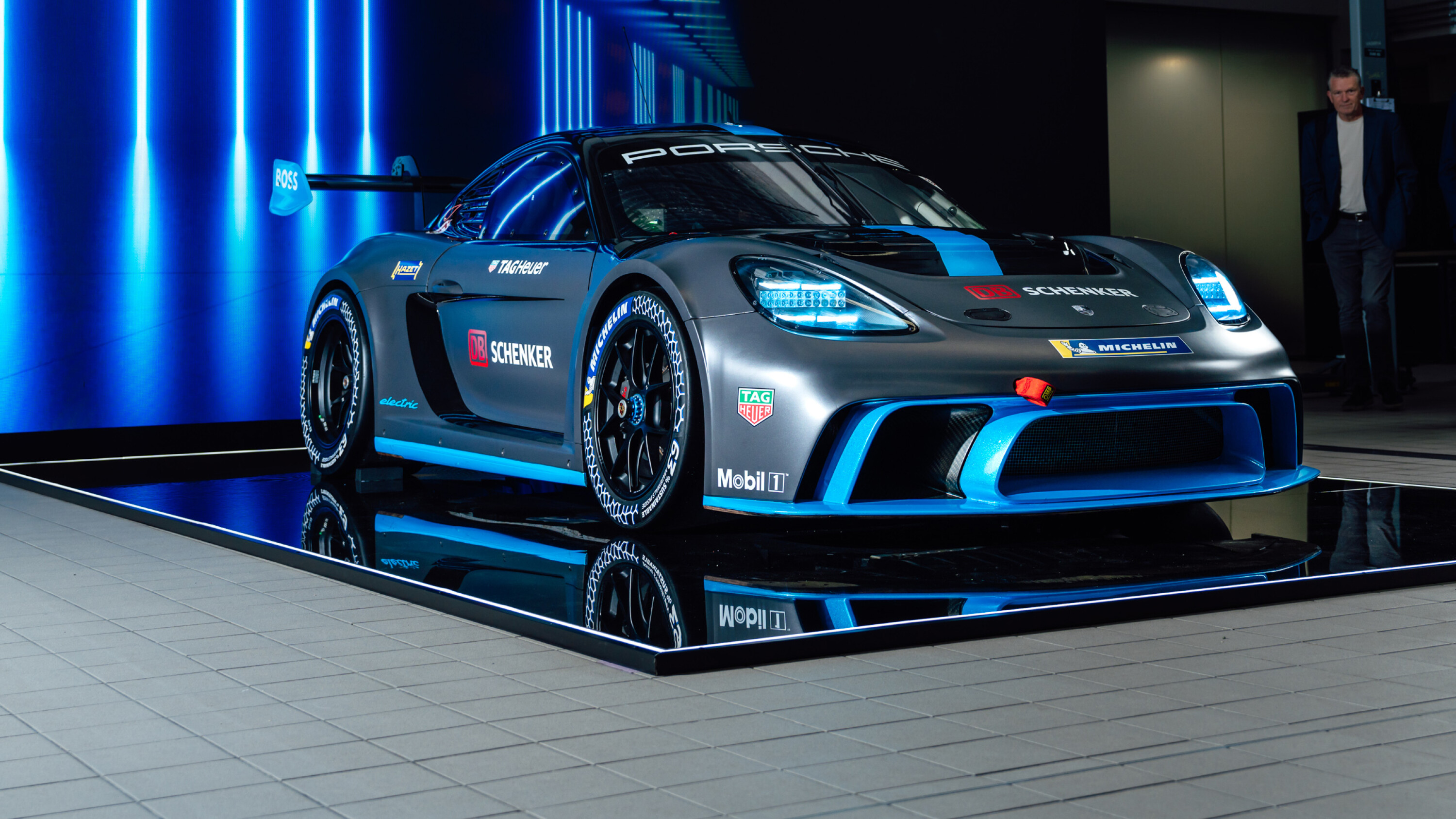
“If you add all-wheel drive on a combustion engine car, yes, you raise your traction a bit, but you’re also adding weight,” he said.
“On electric cars, it’s a completely new playground. We have, on each axle, one electric motor and so we can recuperate energy on both axles. With each minute we are racing, we can recuperate up to one kWh per axle,” Mr Förster explained.
“So it’s very sensible to use both axles for recuperation,” he explained about the GT4 e-Performance. “But we also have the same drivetrain in the front and in the rear, so 500-something horsepower in the rear, and the same in the front.
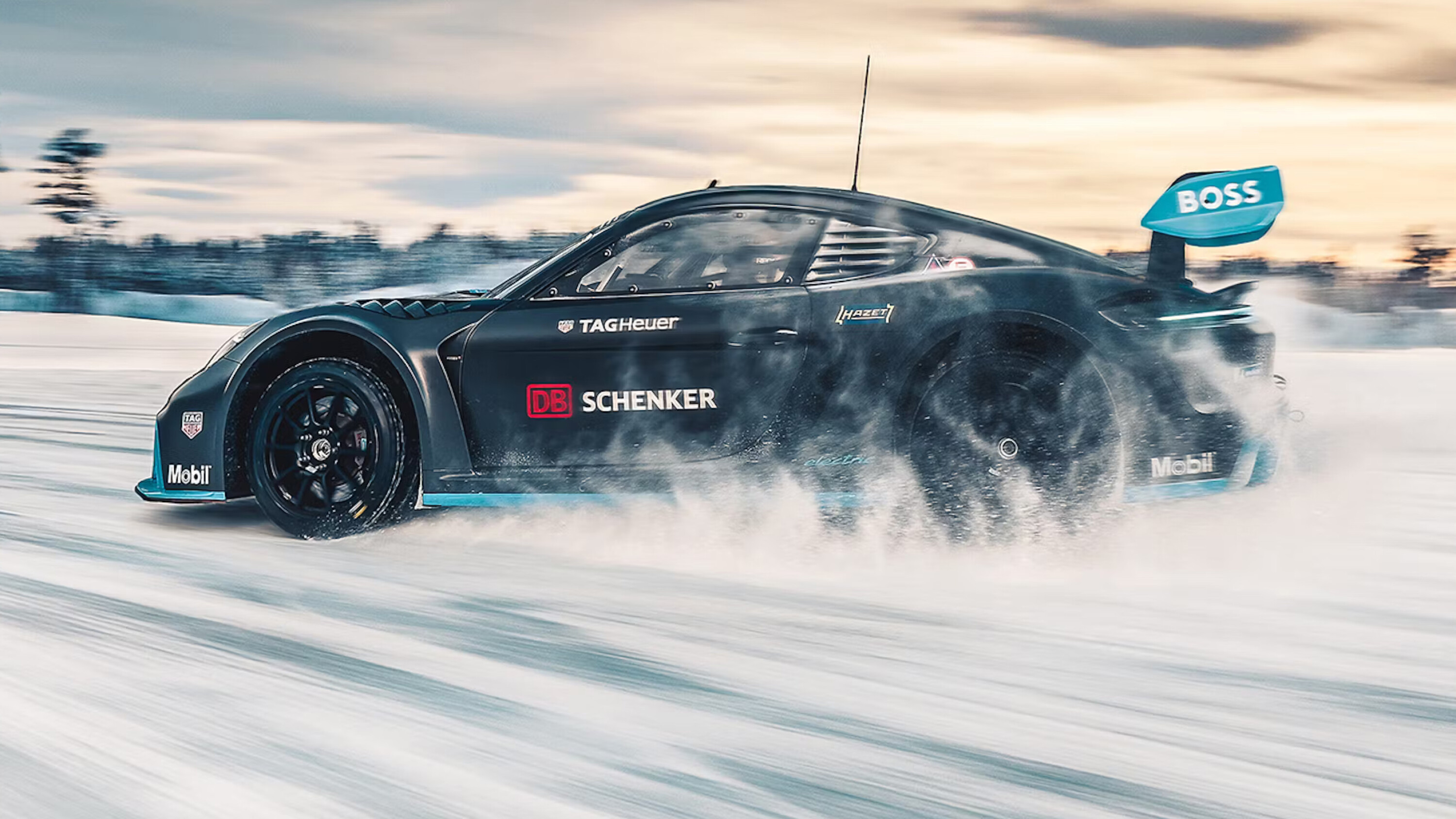
“If we only had a rear-wheel drive car, we would need about 250 kilograms more batteries to reach the same drive time,” he claimed. “And that’s massive. So the decision to go for all-wheel drive, it’s very clear for a race car.
“The advantage is to save weight, but also to save batteries – because batteries are expensive, you also save money,” he said, suggesting that the GT4 e-Performance’s 450kg of batteries is notably less because it has dual-motor all-wheel drive than if it had been rear-wheel drive. “If you can reduce both of those by putting in an additional motor in the front which doubles the power of the car? It isn’t an option.
“It’s also about the drive cycle – because on a regular drive cycle like WLTP because going up to 50 kilometres, holding the speed and braking, stopping, going to the Autobahn – but you never have the chance to break out. On a race course, you do nothing else but pushing hard, braking hard. So the potential of the drive cycle is way higher to get energy back when you’re racing a car, either as a race car, or as a street car on a race track,” Mr Förster said.
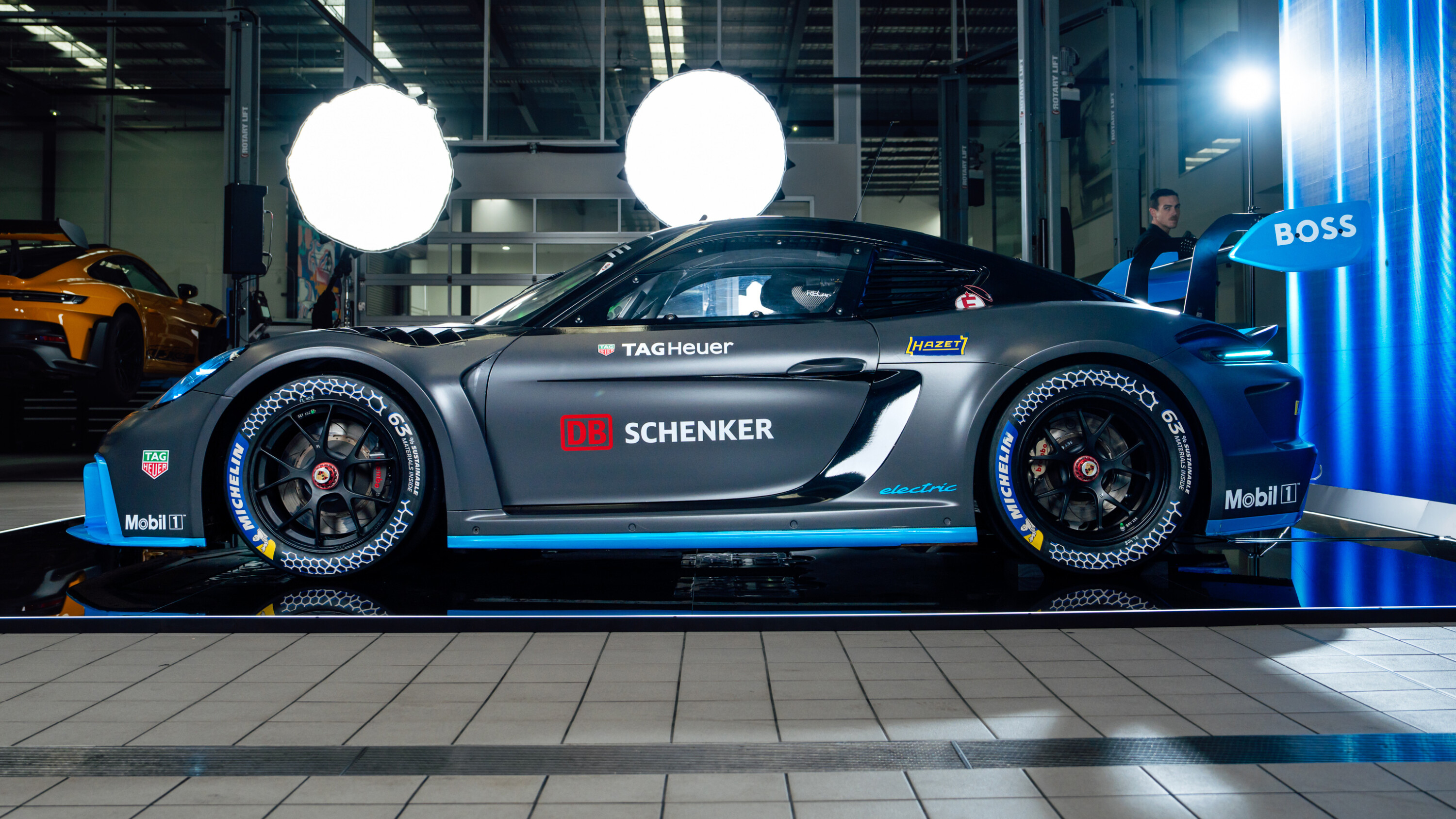
As for production EV sports cars, like the upcoming 718 Boxster and 718 Cayman?
“There are some regulations that on a road car, you’re only allowed to recuperate until 0.3G. Everything with a higher brake acceleration has to be braked by mechanical brakes. So, it’s the law, at least in Europe, so it’s the same potential on a street car – but on a street car it’s not that relevant because most of the time you don’t brake [that hard]. For street cars, it’s absolutely okay to have a rear-wheel driven car.
“There is a gain, yes, but it’s not that effective. You go for about 30 to 50 kilometres more recuperation of energy from the front motor, but not more,” said Mr Förster.
We recommend
-
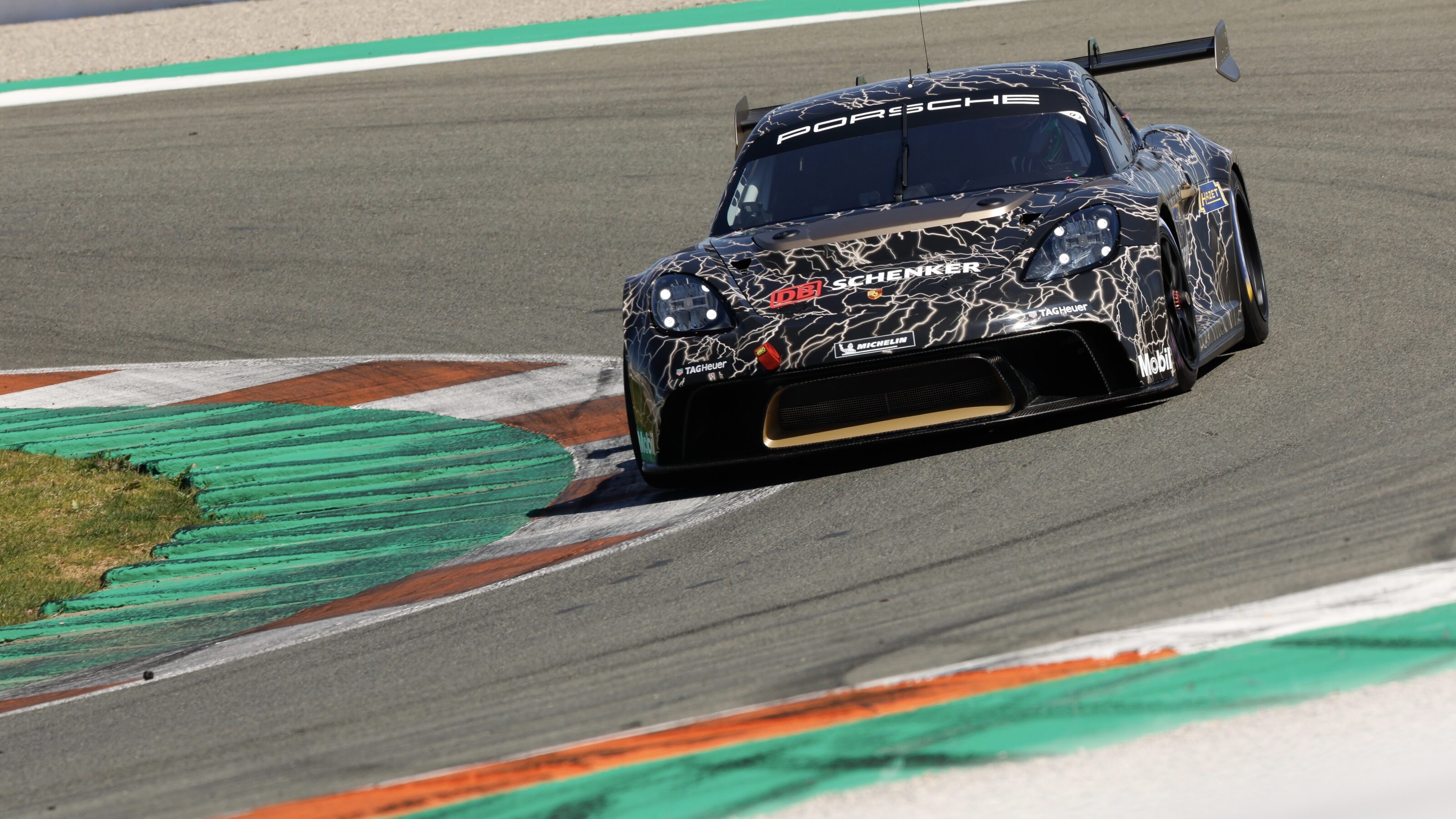 News
NewsPorsche 718 Cayman GT4 ePerformance showcases Mission R technology
The Mission R's powertrain is good enough to make a Cayman as quick as a 911 GT3 Cup
-
 News
News2022 Porsche 718 Cayman GT4 RS previews synthetic fuel
Porsche is forging ahead with the development of synthetic petrol, with 130,000 litres of eFuels expected to be produced from 2022
-
 Reviews
Reviews2022 Porsche 718 Cayman GT4 RS review: First international drive
The heart of the Porsche 911 GT3 and mid-engine Cayman platform finally get the marriage we’ve always wanted

